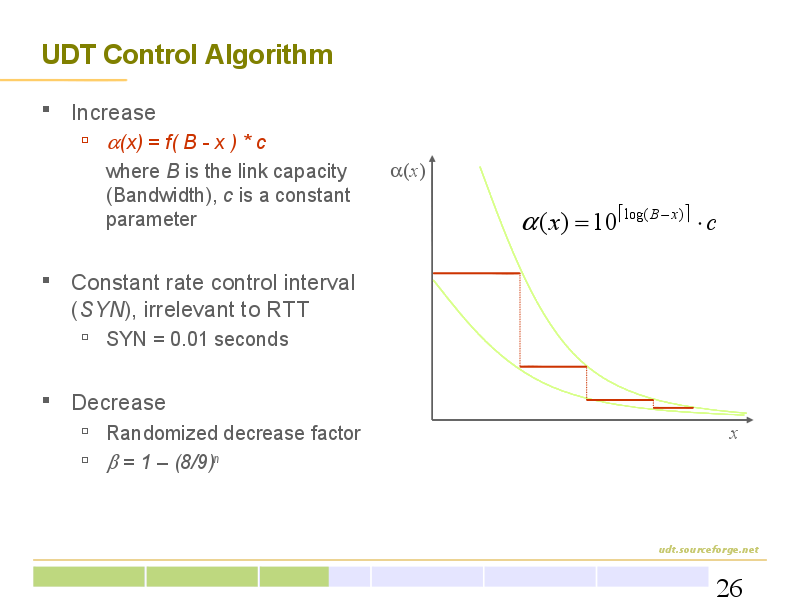

Here is the control algorithm used in UDT. The alpha(x) is related to the difference between the network bottleneck bandwidth and the current data sending rate. As x increases, (B-x) will decrease, and we want f() to be an non-decreasing function.
The UDT increase function actually uses a filter to project (B-x) onto each level of 10's power, which results a stepwise function. This is to be robust to bandwidth estimation error. I will talk about this shortly after.
UDT uses a constant rate control interval in order to realize RTT fairness and reach fast convergence in long RTT links.
We will describe how to estimate the network bandwidth B shortly after, but now let's look at an example of how UDT increases its sending rate.
(x UNIT: bits/sec)